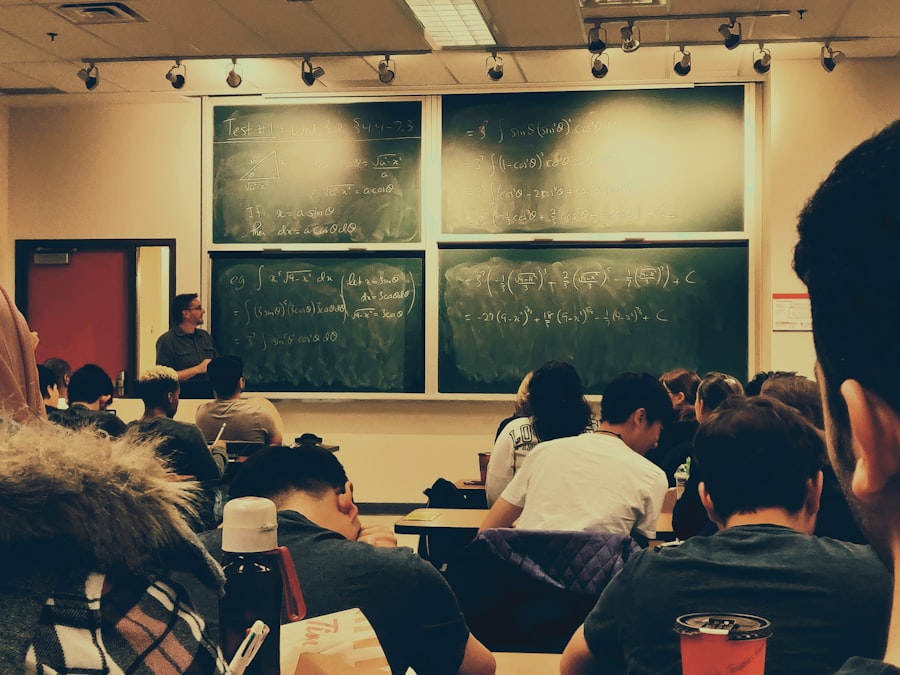ADHD, or Attention Deficit Hyperactivity Disorder, is a neurodevelopmental disorder that affects both children and adults. It is characterized by symptoms such as inattention, hyperactivity, and impulsivity. Individuals with ADHD may have difficulty focusing, staying organized, and controlling their impulses. On the other hand, learning disabilities refer to a range of disorders that affect the ability to process, retain, or express information. These disabilities can impact reading, writing, math, and other academic skills. It’s important to note that ADHD and learning disabilities can coexist in the same individual, leading to additional challenges in academic and social settings.
ADHD and learning disabilities can have a significant impact on an individual’s academic performance, social interactions, and overall well-being. It’s crucial for educators and parents to understand the nature of these conditions in order to provide appropriate support and accommodations. By recognizing the unique challenges faced by individuals with ADHD and learning disabilities, we can work towards creating inclusive and supportive learning environments that cater to their specific needs.
Key Takeaways
- ADHD is a neurodevelopmental disorder that affects a person’s ability to focus, control impulses, and regulate energy levels.
- Learning disabilities are specific processing issues that can affect a person’s ability to read, write, or do math, but do not necessarily impact attention and hyperactivity.
- ADHD testing and diagnosis involves a comprehensive evaluation of a person’s symptoms, medical history, and behavior in different settings.
- Strategies for managing ADHD in the classroom include creating a structured environment, providing clear instructions, and offering frequent breaks.
- ADHD workbooks can play a valuable role in helping students with ADHD develop skills in organization, time management, and emotional regulation. Accommodations for students with ADHD may include extended time on tests, preferential seating, and access to assistive technology.
- Supporting students with ADHD and learning disabilities in the education system requires collaboration between teachers, parents, and support staff to create individualized education plans and provide necessary resources and accommodations.
The Difference Between ADHD and Learning Disabilities
While ADHD and learning disabilities can coexist, it’s important to understand the distinctions between the two. ADHD primarily affects attention, hyperactivity, and impulsivity, while learning disabilities impact specific academic skills such as reading, writing, and math. Individuals with ADHD may struggle with staying focused, following instructions, and controlling their impulses, while those with learning disabilities may have difficulty with reading comprehension, spelling, or mathematical reasoning.
It’s also important to note that ADHD is a neurodevelopmental disorder that affects executive functioning skills such as organization, time management, and working memory. Learning disabilities, on the other hand, are specific to academic skills and may vary in severity and impact. Understanding these differences is crucial for educators and parents in order to provide targeted support and interventions for individuals with ADHD and learning disabilities.
ADHD Testing and Diagnosis
Diagnosing ADHD involves a comprehensive assessment that includes gathering information from parents, teachers, and other relevant individuals. The process typically involves a thorough evaluation of the individual’s symptoms, medical history, and academic performance. There are various tools and assessments used to diagnose ADHD, including behavior rating scales, cognitive tests, and interviews with the individual and their caregivers.
It’s important for professionals conducting ADHD assessments to consider the individual’s developmental history, family dynamics, and any coexisting conditions such as learning disabilities or anxiety disorders. A thorough evaluation is essential for an accurate diagnosis and to develop an appropriate treatment plan. Additionally, it’s important for educators and parents to be aware of the diagnostic process in order to advocate for the necessary support and accommodations for individuals with ADHD.
Strategies for Managing ADHD in the Classroom
| Strategy | Description |
|---|---|
| Clear Expectations | Provide clear and consistent expectations for behavior and academic performance. |
| Positive Reinforcement | Use positive reinforcement to encourage and reward desired behaviors. |
| Break Tasks into Smaller Steps | Break down assignments and tasks into smaller, manageable steps. |
| Provide Visual Aids | Use visual aids and organizers to help students stay organized and focused. |
| Flexible Seating | Offer flexible seating options to accommodate different learning styles and needs. |
Managing ADHD in the classroom requires a multi-faceted approach that addresses the unique needs of each individual. Educators can implement various strategies to support students with ADHD, such as providing clear instructions, breaking tasks into manageable steps, and incorporating visual aids to enhance understanding. It’s also important to create a structured and predictable environment that minimizes distractions and supports focus.
In addition to environmental modifications, educators can also utilize behavioral interventions such as positive reinforcement, self-monitoring techniques, and teaching self-regulation skills. Collaborating with parents and other professionals can also be beneficial in developing a comprehensive support plan for students with ADHD. By implementing these strategies, educators can create an inclusive learning environment that supports the academic and social success of students with ADHD.
The Role of ADHD Workbooks in Learning and Development
ADHD workbooks can be valuable tools for individuals with ADHD to develop essential skills such as organization, time management, and emotional regulation. These workbooks often include activities, exercises, and strategies designed to improve executive functioning skills and address specific challenges associated with ADHD. They can also provide a structured framework for individuals to practice self-awareness, goal-setting, and problem-solving.
In addition to supporting skill development, ADHD workbooks can also serve as a resource for educators and parents to understand the unique needs of individuals with ADHD. By incorporating activities from these workbooks into classroom or home routines, educators and parents can help individuals with ADHD develop essential skills for academic success and overall well-being.
Accommodations for Students with ADHD

Accommodations for students with ADHD are essential to support their academic success and overall well-being. These accommodations may include extended time on assignments or tests, preferential seating to minimize distractions, access to fidget tools or sensory breaks, and the use of visual schedules or reminders. Additionally, providing clear expectations, breaking tasks into manageable steps, and offering frequent feedback can also be beneficial for students with ADHD.
It’s important for educators to collaborate with parents and other professionals to develop an individualized education plan (IEP) or a 504 plan that outlines specific accommodations and support strategies for students with ADHD. By implementing these accommodations, educators can create an inclusive learning environment that caters to the unique needs of students with ADHD.
Supporting Students with ADHD and Learning Disabilities in the Education System
Supporting students with ADHD and learning disabilities in the education system requires a collaborative approach that involves educators, parents, and other professionals. It’s essential to create a supportive and inclusive learning environment that addresses the specific needs of these students. This may involve providing targeted interventions, accommodations, and specialized instruction to support their academic success.
In addition to academic support, it’s important to address the social and emotional well-being of students with ADHD and learning disabilities. This may involve promoting self-advocacy skills, fostering positive peer relationships, and providing access to counseling or other mental health services. By working together to create a supportive network of resources and interventions, we can ensure that students with ADHD and learning disabilities have the opportunity to thrive in the education system.
If you’re interested in learning more about ADHD and its impact on learning, you may want to check out this article on adhd-testing.com. This website offers valuable information and resources for understanding ADHD and its potential impact on learning and academic performance. Whether you’re a student, parent, or educator, this article can provide valuable insights into the relationship between ADHD and learning disabilities.
FAQs
What is ADHD?
ADHD stands for Attention Deficit Hyperactivity Disorder. It is a neurodevelopmental disorder that affects both children and adults. Individuals with ADHD may have difficulty with attention, hyperactivity, and impulsivity.
What is a learning disability?
A learning disability is a neurological condition that affects a person’s ability to receive, process, analyze, or store information. This can impact a person’s ability to learn, understand, or use spoken or written language, do mathematical calculations, coordinate movements, or direct attention.
Is ADHD considered a learning disability?
ADHD is not considered a learning disability. However, individuals with ADHD may experience difficulties in learning and academic performance due to their symptoms of inattention, hyperactivity, and impulsivity.
Can ADHD coexist with a learning disability?
Yes, it is possible for a person to have both ADHD and a learning disability. In fact, research has shown that there is a higher prevalence of learning disabilities among individuals with ADHD compared to the general population.
How is ADHD different from a learning disability?
ADHD is a neurodevelopmental disorder that primarily affects attention, hyperactivity, and impulsivity, while a learning disability is a specific impairment in one or more areas of learning. ADHD can impact a person’s ability to focus and regulate their behavior, while a learning disability can affect a person’s ability to process and understand information in specific areas such as reading, writing, or math.
Can individuals with ADHD receive accommodations in school or work settings?
Yes, individuals with ADHD may be eligible for accommodations in school or work settings to help them manage their symptoms and succeed academically or professionally. These accommodations may include extended time for tests, preferential seating, or access to assistive technology.














